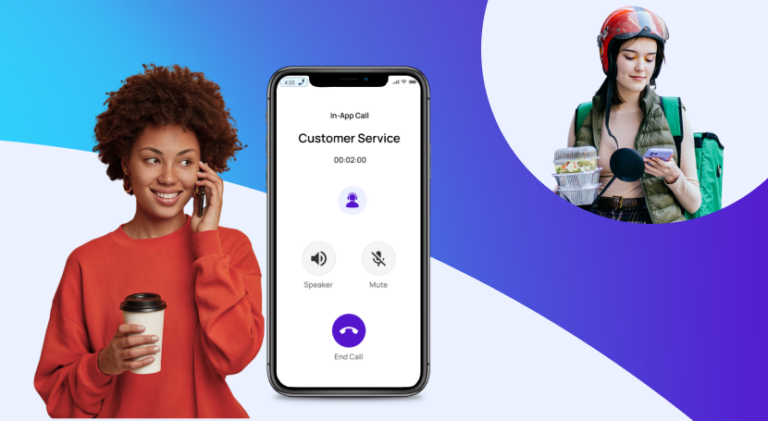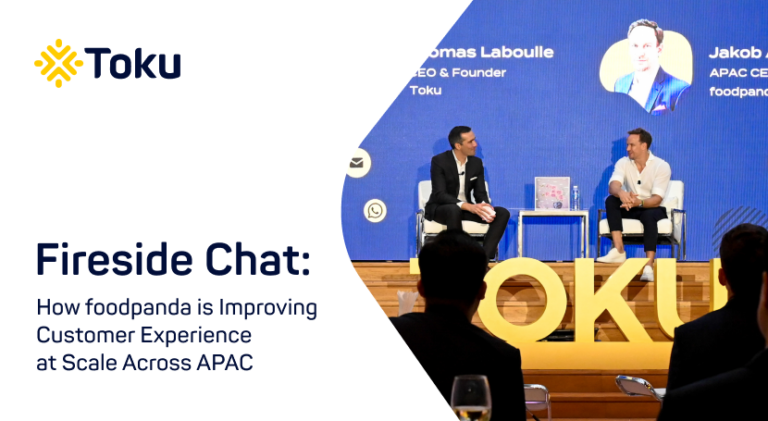Searching for a CCaaS provider but not sure what to look out for? Here are 7 questions you can ask them!
We are living in a highly consumerist society where a frictionless experience from brands is expected by consumers. In e-commerce for example, if your customer is unable to purchase something easily on your platform – whether website or in-app – it is highly unlikely they will stick around.
This is partly due to an inescapable fact: customers today have more options than ever to address their shopping needs. So if an e-commerce app is perceived by customers as cumbersome or difficult to transact on, a customer is more likely to churn.
This was further confirmed in Toku’s Consumer Engagement Report 2022, where we found that regardless of a customer’s preferred communication platform, they’ll always prefer a seamless customer experience. For example, consumers indicated they prefer to have no more than two diversions in any given interaction.
Furthermore, over 60 percent of consumers expect a company to keep a history of their previous interactions.
In other words, the majority of customers want smooth, seamless experiences backed by data-enriched communications.
The question is how an enterprise can achieve a level of data-enrichment in their customer communications that delivers frictionless experiences at scale.
Centralising more communications in-app
In our experience working with multiple enterprises – many of which are sharing-economy apps – on their cloud communications, we have observed more companies recognise the advantages of centralising their customer communications within their apps.
These advantages include:
Consolidation of communication channels – over the years, the number of communication channels such as WhatsApp, LINE, etc. have multiplied and grown exponentially. The reality is a company only needs one asynchronous (messaging) + one synchronous channel (voice calling) embedded in the app. It is easier to manage these interactions when you consolidate your communications to two channels, and centre them on the app interface.
Security & Trust – Call fraud is a persistent problem that continues to spoil the customer experience and ruin the hard-earned trust customers place with a brand. The problem is so serious, that as part of our consumer engagement research, we polled Singapore respondents and found almost 90% have received a scam call. With in-app calls however, this is not a problem. There is a level of trust that the phone call – being directly within a company’s proprietary app – is not a scam call. By keeping customer communications within the app, it is thus possible to restore and elevate trust levels with consumers.
Data Insights – If you have all your communications, and touchpoints embedded in your app, you will have full access to the proprietary data insights accrued, on all touchpoints. Since you have full visibility on what your customers are doing on your app in real time, your agents will also be able to have a fuller picture of what’s happening in an interaction and respond accordingly.
Number-masking in ride-hailing and ride-sharing
Over the years we have seen modern Communication Platform as a Service (CPaaS) and Contact Centre as a Service (CCaaS) solutions play more of an integral role in the operations of the rapidly expanding e-commerce, delivery and ride-hailing verticals.
For example, if you are using a ride-hailing service, you can directly communicate with the driver via in-app calling and not worry about privacy concerns since your number is masked.
This ability to anonymise transactional communications can of course, be applied to multiple use cases such as customer—driver, customer—delivery personnel, customer—customer support agent. There are several other similar use-cases in other companies participating in the sharing economy, all of which require some level of anonymity.
On a sidenote, the case for using number-masking APIs in ride-hailing has solidified recently as more countries in APAC move towards tightening their regulations over privacy and data-sharing. For example, Indonesia recently enacted its first personal data protection law, protecting its citizens against the sharing of their personal details without their express consent.
Number-masking in effect is one way to address the challenge of anonymous taxi or delivery drivers (or any person on a sharing economy app) calling consumers using their actual personal numbers.
Realising new cost-efficiencies through in-app calling
More importantly, because we’re now centralising these communications inside the apps, ride-hailing companies can achieve new cost efficiencies across different markets. In mature markets, the cost per minute of a call in-app vs over traditional telephony may not be that different. However, in emerging markets such as the Philippines, most ride-hailing players are working on the last-mile market, and therefore are operating on thin margins.
In these markets, cost-efficiencies can absolutely make a difference to the bottom-line.
For players in these verticals, moving communications in-app is a no-brainer as it could potentially decrease the phone call cost by a multiple of five.
Creating seamless in-app customer experiences
The customer experience is also significantly improved when ride-hailing companies move to in-app communications. If you have internet connectivity, the call can occur in-app. However, in regions where data connectivity is patchy, companies can also add PSTN as a backup. This way, the call can go through, and the sharing economy app can still mask the number for both parties.
Moving to in-app communications does not necessarily mean migrating entirely to the cloud – you can still have a hybrid telco-cloud approach – something that we have seen many sharing economy apps operating in APAC increasingly require.
Integrated CCaaS-CPaaS solutions empower agents with data
Another advantage of using an integrated CCaaS-CPaaS solution in ride-hailing is that customer support agents can directly call the customer through the cloud service provider’s platform. The system can define whether the call is occurring via the telephony layer or on the application. If the customer’s records are correctly integrated, the agents will have visibility on who is the customer and whether or not they are using the app, which in turn allows agents to quickly respond to the call via in-app or telephone call depending on how robust the data connection is.
In-app communications give companies in the sharing app economy an edge
As we have seen in this article, there is much to gain from embedding data-enriched in-app calling and messaging capabilities in your operations.
The CPaaS and CCaaS solutions that drive these capabilities are so flexible and scalable, it’s easy to add them to your sharing economy app and see results fast.
Because this industry continues to evolve and add on more stakeholders to both front-facing and back-end operations, we foresee a real need for more seamless communications between them underpinned by robust and flexible in-app communications technology.
 V K Sanjeed
V K Sanjeed 


 Nora Huin
Nora Huin 
 Girish Dharmaraj
Girish Dharmaraj 